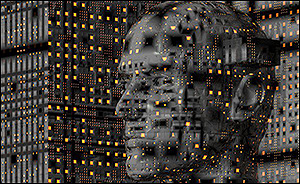Google's Knowledge Vault already contains 1.6 billion facts
15. 6. 2015 | ScienceAlert | www.sciencealert.com
Google has decided to create the largest store of knowledge in human history and it is going to create it without using human brainpower.
Google's Knowledge Vault is a massive database of facts, built up by an algorithm that autonomously trawls the web and transforms data into useable, bite-sized pieces of information. To date the Knowledge Vault contains over 1.6 billion facts. This huge fact reservoir will be the basis of future search engines. Google is currently racing Microsoft, Facebook, Amazon and IBM, who are all attempting to build the same kind of database.The Knowledge Vault will be the foundation for smartphone and robot inteligence.

The algorithm is indiscriminate and will build information equally on places, people, history, science and popular culture. This has raised some privacy concerns as the program can access "backstage" information such as data hidden behind websites like Amazon, YouTube and Google+. In the future, virtual assistants will be able to use the database to make decisions about what does and does not matter to us. Our computers will get better at finding the information we are looking for and anticipating our needs.
Once the Knowledge Vault can interpret objects on sight, it will become integral to real-time information generation. One day you might be able to walk around, point your phone at an object, ask a question about it and recieve an intelligent response.
Read more at ScienceAlert
Image Credit: ScienceAlert, Shutterstock
-jk-




